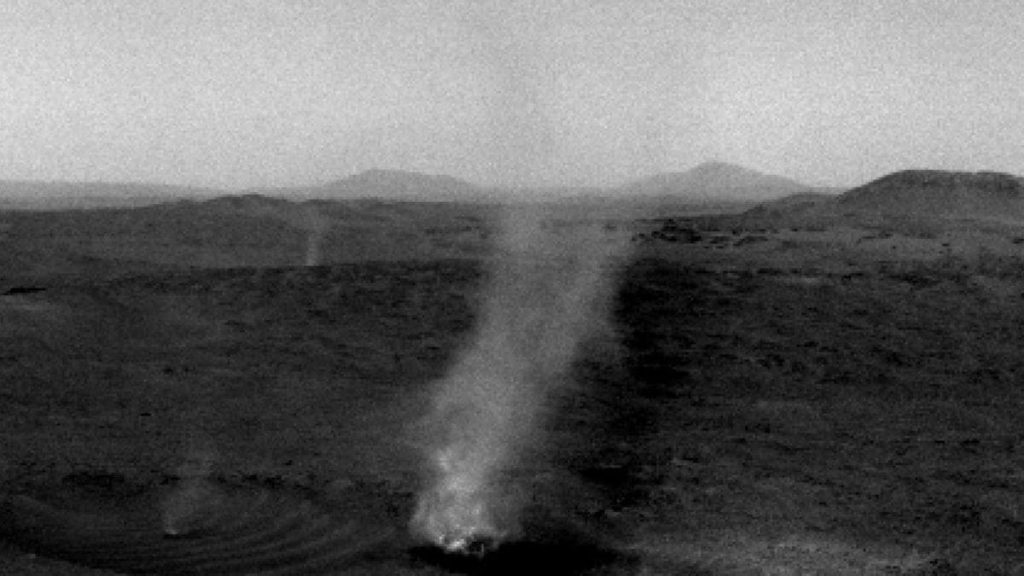NASA’s Perseverance Mars rover’s navigation camera captured a Martian dust devil swallowing a smaller one. The smaller dust devil’s demise was captured during an imaging experiment carried out by Perseverance’s science team to better understand the dynamics at work in the Martian atmosphere. In the 1970s, NASA’s Viking orbiters became the first spacecraft to picture Martian dust devils. Two decades later, the agency’s Pathfinder mission was the first to image one from the surface, seeing a dust devil passing over the lander.
As per the latest report by NASA, the twin rovers successfully captured several dusty whirlwinds. Curiosity, which is exploring Mount Sharp in Gale Crater on the opposite side of the Red Planet from Perseverance, also notices them. Capturing a dust devil photograph or video from a spacecraft requires some luck. Scientists cannot anticipate when they will come, so they routinely monitor all directions for them. When scientists see that whirlwinds occur more frequently at a certain time of day or approach from a specific direction, they use that information to target their monitoring efforts to catch more of them.
What Are Dust Devils?
A dust devil, also referred to as a dirt devil, is a powerful, well-formed whirlwind that lasts just a brief time. Its dimensions range from small (18 inches/half a meter wide and a few yards/meters tall) to gigantic (more than 30 feet/10 meters wide and more than half a mile/1 km tall). The major vertical motion is upward. Dust devils are normally harmless, but they can occasionally become large enough to endanger both humans and property.
Scientific Significance
“Dust devils play a significant role in Martian weather patterns,” said Katie Stack Morgan, project scientist for the Perseverance rover at NASA’s Jet Propulsion Laboratory in Southern California. “Dust devil study is important because these phenomena indicate atmospheric conditions, such as prevailing wind directions and speed, and are responsible for about half the dust in the Martian atmosphere.”


